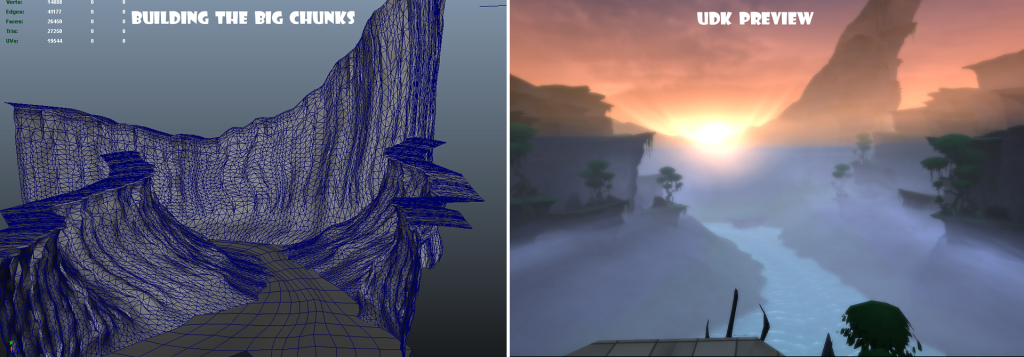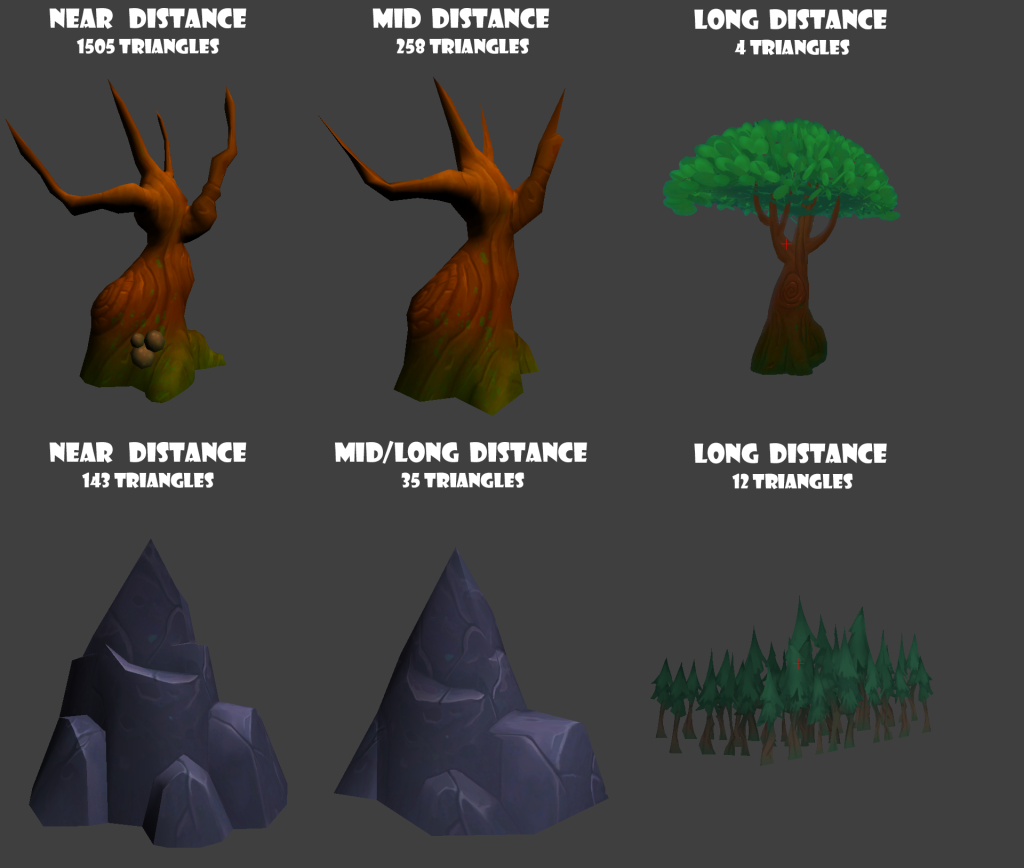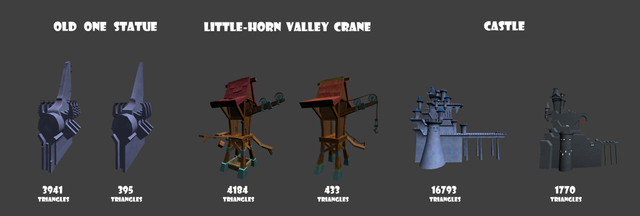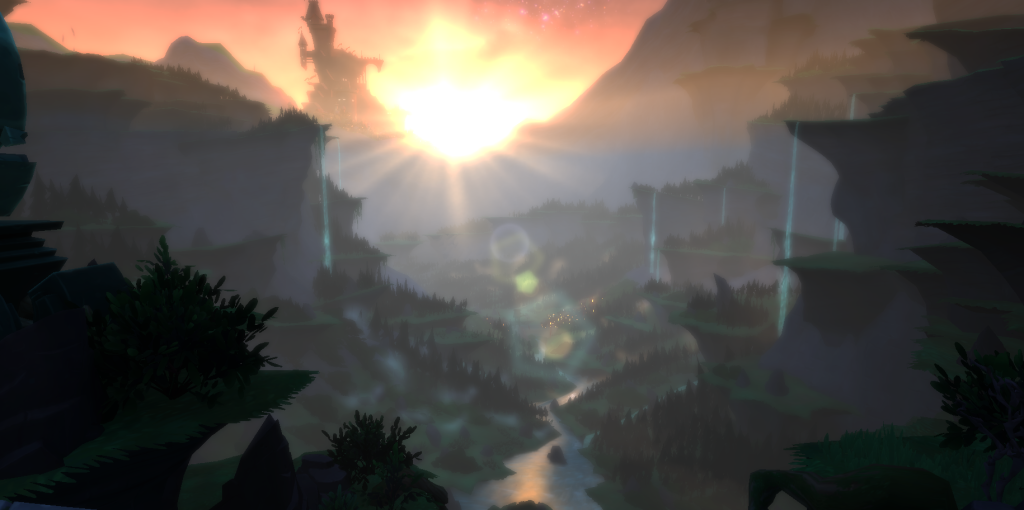Building backgrounds for video games
This is a dev log I did some time ago and would like to share it here, it's the way we build our backgrounds in Dungeon Defenders 2.
Setting the Background
The first step in building a background is to craft the main chunks -- for example, a vast mountain range or a clustered group of buildings. These big pieces will determine the volume and space of all the background, so they should be built carefully.
The pictures above show the first iteration done for the background of the Nimbus Reach level. These mountains were done in Maya and exported to UDK to get a preview.
Small Details and Optimization
Once the big chunks have been made, concept artists will draw a paintover in photoshop to help level designers get a better idea of what is required for the small details. A second iteration on the big chunks might be made at this stage to better match the paintovers.
To keep the level playable in terms of frames-per-second, most of the small details are built using a very small number of triangles. At this point, we must distinguish between mid- and long-distance objects. The further away the model is from the player, the lower the level of detail should be. For mid-distance objects, we reduce the triangle count of the original object to something above 75%, while long-distance objects are created as planes with an artist´s textures applied to them.
Here are some examples:
These small details could include unique visual elements from other existing levels. To keep the map well-optimized, we make very low-poly versions of these representative buildings for the background areas to save lots of triangles as you can see in the next picture.
Also, for all of this optimization work, it is very important to keep in mind the angle at which players will see the background areas. Any area that isn’t visible to the player must be removed.
Adding Particle Effects
Finally, to bring some life to these backgrounds, our VFX artists design tons of cool particle effects. For example, an artist could include the warm glow of the sun on the horizon, a wisp of smoke escaping a chimney or a flock of birds flying below the clouds.
To give you a better idea on how these particles affect the level, check out the next comparison pic. The map on the left doesn’t have any particle effects while the map on the right is filled with them.
.png)
.png)


.png)
.png)
